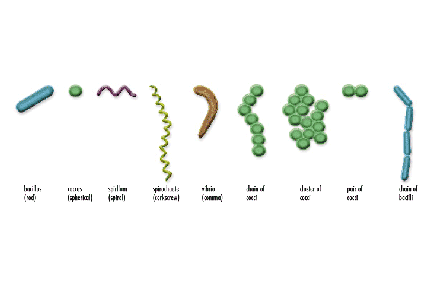Resistance to antibiotics is the ability of microorganisms to resist the effects of antibiotics. This specific type of drug resistance. Resistance to antibiotics develops naturally through natural selection by random mutations, but it can also be provoked by the use of evolutionary pressure on the population. After such a gene is generated, bacteria can transfer genetic information in a horizontal fashion (between individuals) plazmydoy exchange. If the bacterium has several resistance genes, it is called multiple or, informally, Superbug. Causes
Resistance to antibiotics can be introduced artificially into a microorganism through transformation protocols. It can be a useful way of implanting artificial genes into bacteria. Resistance to antibiotics is the result of evolution by natural selection. Antibiotic effect of pressure on the environment, and those bacteria that have a mutation allowing them to survive live playing. They will pass this tag to their descendants, to be fully resistant generation. Several studies have shown that models the use of antibiotics significantly affect the number of resistant organisms developing countries. Overuse of broad-spectrum antibiotics, such as second and third generation cephalosporins, which significantly accelerates the development of resistance to methicillin. Other factors contributing to resistance include incorrect diagnosis, unnecessary prescriptions, improper use of antibiotics in patients, and the use of antibiotics as livestock food additives to stimulate growth. Scientists recently showed bacterial LexA protein may play a key role in acquiring bacterial mutation. Resistant pathogens
Staphylococcus aureus (known as staphylococcus aureus, or staph infection) is one of the most resistant pathogens. Found on the mucous membranes and skin, about one third of the population, it is adapt to antibiotic pressure. It was the first bacterium in which penicillin resistance foundin 1947, just four years after the drug started a mass production. Metytsyllyn then antibiotic selection, but has since been replaced by oxacillin due to significant toxicity of the kidney. MRSA (methicillin-resistant staphylococcus gold) was first discovered in Britain in 1961 and is now quite common in hospitals. MRSA was responsible for 37% of deaths from blood poisoning in the UK in 1999, compared to 4% in 1991. Half of all Staphylococcus aureus infections in the United States are resistant to penicillin, methicillin, tetracycline and erythromycin. This left vancomycin as the only effective means available at that time. However, strains with intermediate (4-8 mg / ml) level of resistance is called GISA (glycopeptides intermediate Staphylococcus aureus) or VISA (vancomycin intermediate Staphylococcus aureus), began appearing in late 1990. First case was discovered in Japan in 1996, and strains since in hospitals in England, France and the United States. The first documented strain with complete (16ug/ml) resistance to vancomycin, known as VRSA (vancomycin-resistant Staphylococcus aureus) were in the U.S. in 2002. A new class of antibiotics, oksazolidinony, became available in 1990, and the first commercially available oksazolidinon, linezolid, is comparable to vancomycin in effectiveness against MRSA. Linezolid resistance in Staphylococcus aureus was registered in 2003. CA-MRSA (community acquired MRSA) has now developed into the epidemic, which is responsible for rapidly progressive, fatal diseases including necrotizing pneumonia, sepsis and necrotizing fastsyyt. Methicillin-resistant staphylococcus gold (MRSA) is the most frequently identified antimicrobial drug-resistant pathogen in hospitals dollars. Epidemiology of infections caused by MRSA is rapidly changing. Over the past 10 years, infections caused by this organism appeared in the society. 2 clones of MRSA in the United States most closely associated with community outbreaks, USA400 (Modern Warfare 2 strain, line ST1) and USA300, often contain leykotsydynu pantones-Valentine (PVL) genes and often have been associated with skin infections and soft tissues. Outbreaks of community associated (CA), MRSA infections were reported in correctional facilities, including sports teams, among the recruits, in newborn nurseries, and among active male homosexuals. CA-MRSA infections, now seems endemic in many urban areas and cause most CA-S. aureus infections. Enterococcus faecium other Superbug in hospitals. Enterococcus resistant to penicillin was seen in 1983, vancomycin-resistant Enterococcus (VRE) in 1987, and Linezolid-resistant Enterococcus (LRE) at the end of the 1990s. Streptococcus pyogenes (group A streptococcus: GAS) infection is usually treated with various antibiotics. Early treatment can reduce the risk of death from invasive group A streptococcal disease. However, even the best medical care does not prevent death in each case. For those who have very severe strattera price illness, supportive care in intensive care may be needed. For persons with necrotizing fastsyyt, surgery is often necessary to remove damaged tissue. Strains of S. pyogenes resistant to macrolide antibiotics appeared, but all strains are uniformly sensitive to penicillin. The resistance of pneumococcus to penicillin and other beta-lactams is increasing worldwide. The main mechanism of resistance involves the introduction of mutations in genes that encode penicillin-binding proteins. Selective pressure is thought to play an important role, and the use of beta-lactam antibiotics has been involved as a risk factor for infection and colonization. Pneumococcus is responsible for pneumonia, bacteremia, otitis media, meningitis, sinusitis, peritonitis and arthritis. For more information on the subject of resistance to antibiotics, read the full article on, or see the following articles:
Editor Note: This article is not intended to provide medical advice, diagnosis or treatment. Recommend this page on Facebook, Twitter

,
and Google +1: Other Bookmark and collaboration:
No comments:
Post a Comment